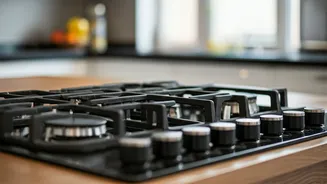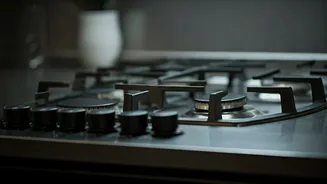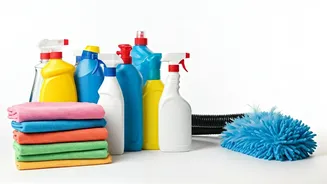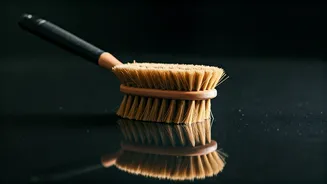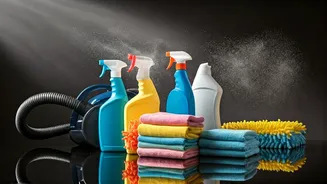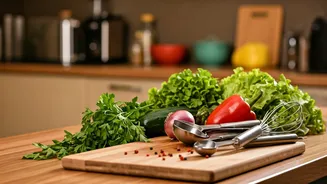Prep Your Area
Before you begin the cleaning process, it's crucial to prepare your workspace to make things easier and prevent any safety issues. First, ensure your gas
stove is turned off and completely cooled. If you have an electric stovetop, make sure it's switched off and unplugged to avoid any electric shocks during the process. Remove all the grates, burner caps, and any other removable components from the stovetop. Submerge these parts in a solution of warm, soapy water. This will allow them to soak, which will help loosen any stubborn food particles or grease that might be stuck. Ensure adequate ventilation in your kitchen by opening windows or turning on the exhaust fan. This is particularly important when using cleaning products, as it helps to eliminate unpleasant odors and ensures a healthier environment for your cleaning activity. By setting up the space in advance, your cleaning task will be easier and safer.
Soapy Cleaning Solutions
After preparing your kitchen and the stovetop components, focus on making a suitable cleaning solution. Mix warm water with a small amount of dish soap in a spray bottle or a bowl. The dish soap assists in breaking down grease and removing food residue effectively. For a more powerful cleaning action, try using a mixture of baking soda and water to form a paste. Baking soda is an excellent natural abrasive that helps in scrubbing off tough stains without scratching your stovetop's surface. Another option involves using white vinegar; mix it with water in a spray bottle. Vinegar’s acidity is excellent for cutting through grease and disinfecting the surface. If your stovetop has particularly stubborn stains, consider using a commercial degreaser. Always follow the product’s instructions carefully to ensure your safety and avoid any potential damage to the stovetop.
Cleaning the Surface
Once your cleaning solution is prepared, it's time to focus on the stovetop surface. Spray or apply the soapy water solution all over the stovetop, making sure to cover every area. Allow the solution to sit for a few minutes to soften any grime or grease. Use a soft sponge or a microfiber cloth to wipe down the surface gently. Avoid using abrasive scrubbers, as they may scratch the finish of your stovetop. For tougher stains, use the baking soda paste. Apply it on the stained areas and let it sit for a few minutes before gently scrubbing it away. Ensure you rinse the area thoroughly with clean water to remove any traces of cleaning solution. For porcelain or enamel stovetops, vinegar solution can be very effective in removing stains and grease. Spray the vinegar solution onto the surface, let it sit for a few minutes, and then wipe clean. Always follow the manufacturer's instructions for cleaning to prevent damage.
Component Cleaning Steps
While the stovetop surface is being cleaned, focus on cleaning the removable components that were soaking earlier. Take the grates and burner caps from the soapy water solution and scrub them using a sponge or a brush. Pay close attention to any areas where food has accumulated or grease is present. For grates with significant buildup, you can also use the baking soda paste or soak them in vinegar for a few hours. Rinse each component with clean water after scrubbing to ensure all the soap and grime are removed. Make sure all the components are completely dry before you put them back onto the stovetop. If any of the burner ports are clogged, use a needle or a small wire to clear them. This is essential to ensure the burners function correctly and provide an even flame. Reassembling the components when dry prevents rusting and ensures the longevity of your stovetop.
Final Touches & Maintenance
After you have cleaned all the components and the stovetop, it's time to put everything back together and add the final touches. Carefully place the grates and burner caps back onto the stovetop, ensuring they are positioned correctly. Inspect the stovetop to make sure it looks clean and shiny. Use a dry microfiber cloth to buff the surface, which can enhance the shine and remove any remaining streaks. After the cleaning, consider adding some maintenance steps to extend the cleanliness and lifespan of your stovetop. Wipe spills immediately after they occur to prevent them from hardening and becoming difficult to remove. Clean your stovetop regularly, preferably after each use or at least once a week, depending on how often you cook. Periodically check your burner ports to make sure they are not clogged. A clean and well-maintained stovetop enhances both the appearance and functionality of your kitchen, making it more enjoyable to cook.
